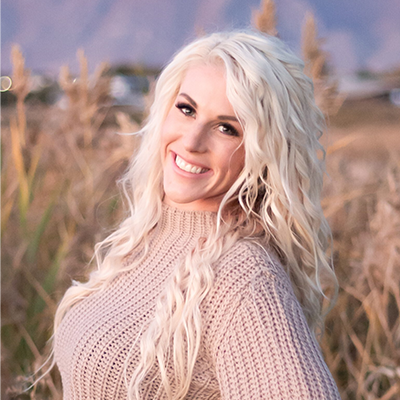If anything is true about running a ranch, it’s that it comes with risk. There are risks related to legal aspects, human capital and production, just to name a few.

Market risk is one area that has a direct impact on the profitability of an operation. Producers often feel they have no control over the price received for their commodities. Those pesky buyers seem to dictate what they will pay with no regard to cost of production. Fortunately, that’s just not true.
There are several risk management tactics that can give ranchers greater control over the price they receive for their products. One key tool is Livestock Risk Protection (LRP Insurance).
WHAT IS LRP INSURANCE?
Livestock Risk Protection is a product backed by the USDA that allows producers to insure a floor price for their livestock without sacrificing upside potential, as would happen in a traditional hedge using cattle futures. Simply put, it's an affordable way for ranchers to protect themselves from taking a financial hit when cattle prices drop.
How does LRP Insurance Help Manage Market Risk?
There are several ways that LRP can assist ranchers in their efforts to manage market risk. And strategies for one ranch may not always work for another. Here are some of the most common ways ranchers utilize LRP Insurance.
1. LRP Insurance Protects Profitability
Ranching is an amazing way of life, but if the ranch is not managed in a sustainable (and profitable) way, there will be nothing to pass on to the next generation. Aside from the obvious access to capital, a large reason that corporate ranches and absentee ownership are becoming the norm are due to their ability and willingness to look at return on investment.

Too often ranchers do not take a close enough look at their finances on a regular basis. It’s crucial to develop a quality set of financial records and a clear picture of break-even cost (including owner compensation). Once ranchers are aware of their break-even point, they can take steps to protect against drops in the market.
With Livestock Risk Protection, ranchers can monitor the expected ending values and lock in coverage at, or above, their break-even levels. This way, if prices do drop below that break-even point by the end date, policyholders are protected against a loss.
This is very similar to the way feedlots operate, though they use a traditional hedge. Once a rancher contracts their cattle with a feedlot, they hedge those cattle to lock in the profit point. With a traditional hedge, cattle are locked into that exact price point since a short position will lose money as the market price increases. This will be offset by the increased value of the cattle. However, the margin stays basically the same. With LRP Insurance, ranchers protect against a drop in the futures board, but don’t lose out on the higher return when prices go up.
2. LRP Insurance Protects Against Catastrophic Market Downturns
To say that livestock markets can be volatile is a bit of an understatement. As the industry moves more and more toward a global marketplace, the influence of events or other factors that used to seem so far away will influence markets closer to home. Livestock Risk Protection can be used as catastrophic coverage protecting ranches from major downturns caused by the infamous (and less illusive) “black swan” events. This coverage philosophy chooses an acceptable level of risk tolerance that can be absorbed by an operation’s finances and then insuring against a drop in the market at or below that point.

For example, if a rancher’s break-even point is $150/cwt for their calves, but they can withstand a drop of $20/cwt, they may choose to insure at that level. They do this by choosing a lower percent of the projected ending value. This is a great strategy for those looking for lower premium rates or who have a higher risk tolerance due to strong fiscal health. This strategy may not protect profitability, but it can protect against serious market drops.
Think of this strategy like a high deductible health insurance plan. There is not a lot of protection or coverage on a month-to-month basis, but if there is a serious accident, producers have the peace of mind that comes from knowing they will only be responsible for a certain amount out of pocket. Just remember, hope for the best but prepare for the worst.
It can be tempting to ignore the need for catastrophic protection, assuming you’ll never need it. However, thoughtful planning can make all the difference in preserving a ranch when market storms or droughts hit hard.
3. LRP Insurance Supports Vertical Integration
One aspect of the cattle industry that diminishes consumer dollars trickling back to producers is the number of times cattle change hands from birth to the grocery store. Each new buyer throughout the process looks to profit. Producers can minimize those exchanges and keep margin dollars by retaining ownership of their calves through several, or all, stages of the beef supply chain.

The topic of “retained ownership” has been bouncing around the industry for a while. Feedlots are moving more toward custom feeding rather than buy, fatten, and sell. They tack yardage on top of cost and walk away from the risk. Retention is a viable way to put more middleman dollars back into the cow-calf producer’s pocket. However, this exposes the cow-calf producer to more risk.
The use of LRP as coverage for backgrounded cattle, or cattle on feed, helps mitigate that risk by protecting the expected value of the animals. Feeder cattle can be covered up to a 900-pound expected end weight and fed cattle can be covered up to a 1,400-pound end weight. With several weight classes to choose from, it is possible to cover animals through the feedlot to the packer rail.
Would Your Ranch Benefit From LRP Insurance?
LRP Insurance can be valuable to ranchers in different capacities depending on the specific operation’s needs. Applications can take several days to process and simply filling one out does not lock the applicant into a policy.
Once the application is approved and ready, the LRP endorsement, with its end date and projected ending value, can be locked in quickly. This allows ranchers to cover calves when the price is right for their market risk management goals.
For more information on how an LRP policy could benefit your ranch, call 435-625-1022 to speak with an agent today.




.webp)




